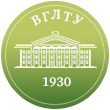Russian Federation
With the improvement of dietary level, the incidence of various kinds of diseases is also increasing, which can cause tumour or even cancer in serious cases. Target detection occupies an important position in image recognition and classification tasks, which is a very important research in the field of computer vision, and its application in the medical field has become more and more in-depth in recent years. In this paper, a deep learning-based Computer Aided Diagnosis (CAD) system is proposed for common lesion detection to reduce the possibility of cancer. The construction of the system consists of five main steps: building a deep learning framework, preprocessing of lesion images, feature extraction to train the model, performance comparison of lesion detection models, and front-end interface design and development.
deep learning, convolutional neural network, target detection, computer-aided diagnosis
1. Sarraf S., Tofigi G. DeepAD: Klassifikaciya bolezni Al'cgeymera s ispol'zovaniem glubokih svertochnyh neyronnyh setey na osnove MRT i FMRT / S. Sarraf, G. Tofigi // BioRxiv. – 2016. – № 070441.
2. Arapov D. V. Avtomatizirovannaya mobil'naya sistema prinyatiya resheniy dlya ispol'zovaniya v special'noy medicine / D. V. Arapov, V. A. Kuricyn, S. A. Skorobogatov // Modelirovanie sistem i processov. – 2024. – Tom 17, № 3. – S. 7–16. – DOIhttps://doi.org/10.12737/2219 – 0767 – 2024 – 5 – 13. DOI: https://doi.org/10.12737/2219-0767-2024-5-13; EDN: https://elibrary.ru/CMPAPT
3. Korobova L. A. Sistemnyy podhod pri reshenii prikladnyh medicinskih diagnosticheskih zadach / L. A. Korobova, T. A. O. Eynullaev, R. V. Ten // Modelirovanie sistem i processov. – 2024. – Tom 17, № 3. – S. 52–61. – DOIhttps://doi.org/10.12737/2219 – 0767 – 2024 – 50 – 59. DOI: https://doi.org/10.12737/2219-0767-2024-50-59; EDN: https://elibrary.ru/PSBDLB
4. Sammers R. M. Progress v polnoavtomaticheskom interpretacii komp'yuternoy tomografii zhivota / R. M. Sammers // American Journal of Roentgenology. – 2016. – Tom 207, № 1. – S. 67–79. DOI: https://doi.org/10.2214/AJR.15.15996
5. Spanhol' F. A., Oliveyra L. S., Petizhan S. i dr. Klassifikaciya gistopatologicheskih izobrazheniy raka grudi s ispol'zovaniem svertochnyh neyronnyh setey / F. A. Spanhol', L. S. Oliveyra, S. Petizhan i dr. // 2016 Mezhdunarodnaya sovmestnaya konferenciya po neyronnym setyam (JCNN). – IEEE, 2016. – S. 2560–2567. DOI: https://doi.org/10.1109/IJCNN.2016.7727519
6. Nizhavan R., Verma R., Bushan S. i dr. Integrirovannaya arhitektura glubokogo obucheniya dlya identifikacii zabolevaniy nogtey / R. Nizhavan, R. Verma, S. Bushan i dr. // 2017 13-ya Mezhdunarodnaya konferenciya po tehnologiyam signalov i izobrazheniy i setyam, osnovannym na Internete (SITIS). – IEEE, 2017. – S. 197–202. DOI: https://doi.org/10.1109/SITIS.2017.42
7. Charalambus S. S., Bharat A. A. Metodologiya rasshireniya dannyh dlya obucheniya algoritmov raspoznavaniya galt s ispol'zovaniem mashinnogo/glubokogo obucheniya / S. S. Charalambus, A. A. Bharat // IEEE Transactions on Medical Imaging. – 2016. – Tom 24, № 10. – S. 1016–1027.
8. Rot H. R., Lu L., Lyu Dzh. i dr. Povyshenie effektivnosti komp'yuternoy pomoschi v detekcii s ispol'zovaniem svertochnyh neyronnyh setey i sluchaynogo agregirovaniya vidov / H. R. Rot, L. Lu, Dzh. Lyu i dr. // IEEE Transactions on Medical Imaging. – 2015. – Tom 35, № 5. – S. 1170–1181 DOI: https://doi.org/10.1109/TMI.2015.2482920
9. Zarevich A.I., Makarenko F.V., Yagodkin A.S., Zol'nikov K.V. Modelirovanie povedeniya mobil'nyh robotov s ispol'zovaniem geneticheskih algoritmov // Modelirovanie sistem i processov. – 2022. – T. 15, № 3. – S. 7-16. DOI: https://doi.org/10.12737/2219-0767-2022-15-3-7-16; EDN: https://elibrary.ru/AGVATZ




